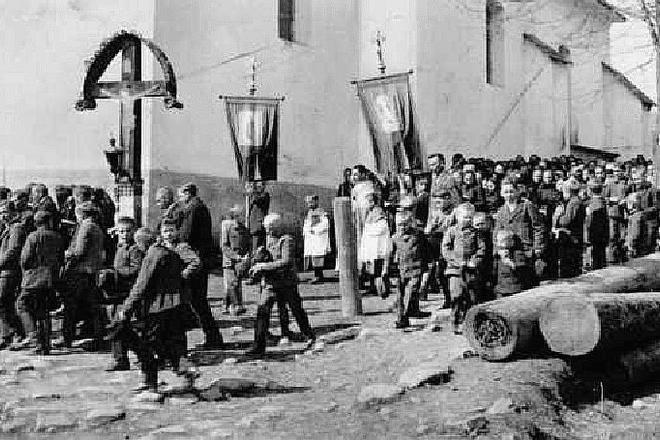AFTER World War II, when the Germans were forcibly deported from Slovakia, one chapter of our history, maybe over a thousands years old, was concluded. Until then, the Germans had made an important part of the population, along with Slovaks and Hungarians. They came to Slovakia gradually, in several waves. Mostly, they were invited by the country’s leaders and noblemen who knew that these people were extraordinarily hard-working, and that their craftsmanship and technological skills were much better than those of the natives.
Three German islands were created in Slovakia: one in Bratislava and Western Slovakia, the second in its central part, and the third in the east, in Spiš. The postcard you are looking at, comes from the 1930’s and shows a procession of Germans in Hauerland. This name became interesting as it grew accustomed to the German region in central Slovakia, as many local towns and villages bore names that ended in "hau". For example Honneschau – today’s Lúčky, Glaserhau, today’s Sklené, and Drexlerhau, now Jánova Lehota. According to language analyses of local dialect, the migrants originally came from eastern parts of central Germany.
Until 1945, people of German origin comprised more than half of all Hauerland's population, as much as 90 percent ni some places. Today, it is a popular region for tourism.

